- Betting Guide:
- How To Play
- Blackjack Strategy
- How to Count Cards
- Free Blackjack
- Bitcoin Blackjack
- Australia Blackjack
- Canada Blackjack
- Canada – Live Dealers
- India Blackjack
- New Zealand Blackjack
- South Africa Blackjack
- UK Blackjack
- USA Blackjack
- Blackjack vs Poker
- Blackjack vs Spanish 21
- Double Down in Blackjack
- Soft vs Hard Blackjack
- Surrender in Blackjack
- Live Dealer Blackjack – UK
Blackjack
How to Count Cards in Blackjack & Increase Your Odds of Winning
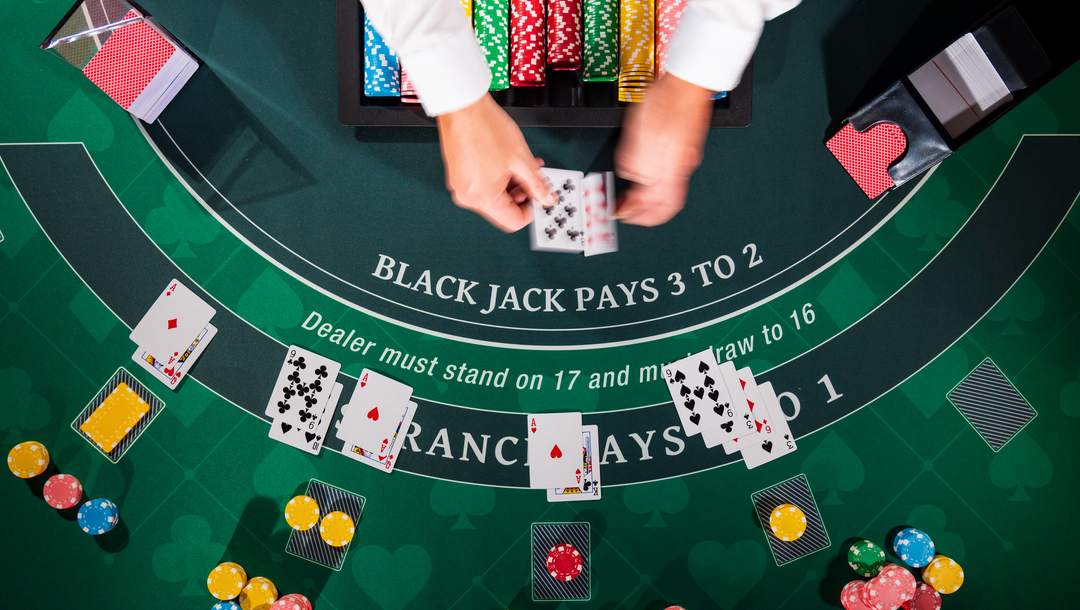
Everyone has seen examples of card counting in the movies when a group of nerdy academics tries to take on a casino in order to rob it by working together and using the card counting strategy to do it. However, what you might not know is that card counting in blackjack in actually — not illegal at all. In fact, it is not even against the casino rules. It is a perfectly valid strategy that is commonly used by gamblers around the world.
In fact, it is quite simple to learn how to do it, although it does take a fair amount of time and effort to master it.
How does counting cards work?
In its essence, card counting can be broken down into four basic steps.
The first step is to assign a value to each card. After that comes the second step, which is to keep an eye on the cards that are being dealt and add their value in order to keep a so-called “running count.”
The third step in the process is to actually use the information you have gathered up to this point, in order to calculate the count per deck. This is known as the True Count. Finally, the fourth and last step is to use all of this information to adjust your bets as the true count continues to rise.
As mentioned, it will take a bit of practice to do this, but if you are determined and focused enough, you could eventually become a master at card counting and end up winning major amounts of money. Professionals claim that they have won millions relying on this craft after spending years perfecting it, so it is more than possible.
It is also worth noting that a lot of people believe that card counting relies on your ability to memorize the value of the cards, deck, and alike, which is why they find it intimidating. However, this is a false assumption, which is good news, as you don’t have to train your memory in order to do it. The art of card counting has nothing to do with trying to remember how many specific cards were dealt.
When it comes to blackjack, it is favorable to the player if there are more 10s, Jacks, Queens, Kings, and Aces remaining in the shoe, and that is pretty much the only thing that you need to remember. In other words, card counting is all about keeping track of the ratio between low and high cards rather than remembering how many specific cards were dealt out of the shoe.
If all of this seems a bit too vague and unclear still, don’t worry — we are going to break down each of the previously mentioned four steps and show you exactly what you need to do in order to use card counting to your advantage.
Card counting: A Step-By-Step guide
Step 1: Assign value to the cards
The first step in becoming successful at card counting is to assign values to the cards. There are different strategies that people use here, but the most common way to do it is to assign the value of +1 to any card from 2 to 6. Next, cards from 7 to 9 should be assigned the value of 0.
Finally, cards from 10 to Ace have a value of -1. So, as the cards are being dealt, you will either add 1, subtract 1, or do nothing, depending on which card gets dealt. That is all there is to know for this first step, which leads us to the second one, which is:
Step 2: The Running Count
Once you know the value of the cards, it’s time to start counting. You will have to keep a running count by subtracting or adding every card that you see in each shoe. This is fairly easy, and all you need to do is update the count as new information reveals itself.
You will continue to do this for each shoe, card after card, round after round, until the cards get shuffled again. Obviously, this has changed over time, and the method evolved alongside the game of blackjack itself. In the past, blackjack was played with a single deck, and the situation was simpler, as this information was enough to start placing bets with a certain amount of confidence. When you notice that the running count is going up, you start getting the advantage in the game. But, if the running count gets into the negative, you will know that the casino has the advantage.
These days, however, you need to keep True Count in mind, as well, which is the third step of modern-day card counting.
Step 3: Calculate the True Count (Count per deck)
While card counting is not illegal, the casinos quickly recognize that playing blackjack with a single deck allows the players to gain an advantage and win money, and if there is something that casinos do not like, that’s losing money. So, they changed the game and introduced multiple decks, believing that this would be enough to thwart card counters.
Fortunately, there is a way around it, and you simply need to translate the information that you are gathering into the so-called True Count or count per deck. While this might sound difficult, it really isn’t, and all you need is to remember a simple equation.
With multiple decks in the game, having a certain running count (let’s say +5) is completely different from having the same running count for one deck. If there are multiple decks, in this scenario, there is less than 1 additional high card per deck remaining. In other words, you, as a player, still do not have the advantage.
Of course, card counters do not only care about a high card count but also the concentration of high cards vs the concentration of low cards. On the other hand, if you were playing with a single deck and had a running count of 5, that would mean that there are 5 more 10s and Aces in the remaining cards that make up the deck. This allows the player to have an edge.
So, how do you calculate the true count? Simple. All you need to do is divide the running count with the number of the remaining decks. If the running count is 10, with 5 decks remaining, the True Count is 2. If the running count is -7 and there are only 2 decks remaining, the true count is -3.
Combining card counting with a basic strategy can bring a significant advantage to the player, which allows them to make money. However, there is one remaining step, and that is:
Step 4: Change your bets to accommodate rise and fall of True Count
The final step in the card counting process is to keep a running count and true count and adjust your behavior during the game accordingly. If you know when the house lost the edge in your favor, you will know when to change your bet and your entire approach to the game.
Not changing your playstyle while counting cards would mean that you are just playing a very mentally exhausting game of blackjack, so it is imperative to try and capitalize on the information that you have been collecting throughout the game.
That means raising your bet when you notice that the true count is rising and betting really big when the cards are in your favor or really small when the count is neutral or negative. Other than that, all that remains is the bankroll management and a good betting strategy. This can be challenging and quite complicated, especially since one wrong step can cause a lot of damage to your bankroll if you don’t know how to bet properly and in accordance with the situation.
Can You Play Blackjack for Real Money?
Absolutely, all of the casinos that we recommend enable players to enjoy blackjack for a wide range of stakes. Simply choose your location below and we will recommend the best real money blackjack sites.
Can You Play Free Blackjack?
Yes, all of the casinos that we recommend offer the option to play blackjack for free. You can then practice playing until you are ready to play for real money.
What Are These Blackjack Terms: Hit, Stand, Split, Double?
Hit - After the player is dealt the two initial cards, the player has the option to hit (request an additional card). The player should keep asking to hit until they feel that they have a sufficiently strong hand to win (as close to 21 as possible, without going over 21).
Stand - When the player has cards that they feel are sufficiently strong to beat the dealer then they should “stand.” For example, a player may wish to stand on a hard 20 (two 10 cards such as a 10, jack, queen, or king). The dealer must keep playing until they either beat the player or go bust (going over 21).
Split - After the player is dealt the first two cards, and if those cards are of equal face value (for example, two queens), then the player has the option to split their hand into two separate hands with equal bets on each hand. The player must then continue to play both hands with regular blackjack rules.
Double - After the initial two cards are dealt, if a player feels that they have a strong hand (such as a king and an ace), then the player may choose to double their initial bet. To learn when to double read our guide on When to Double Down in Blackjack.
What Are the Best Starting Hands?
Blackjack - This is an ace and any 10 value card (10, jack, queen, or king). This is an automatic win for the player.
Hard 20 - This is any two 10 value cards (10, jack, queen, or king). It is unlikely that the player will receive an ace next, and the player should always stand. Splitting is also not recommended.
Soft 18 - This is a combination of an ace and a 7 card. This combination of cards offers the player different strategy options depending on what cards the dealer is dealt.
What Is Single-Deck Blackjack?
As the name implies this is blackjack that is played with only one deck of 52 cards. Many blackjack aficionados refuse to play any other type of blackjack as this blackjack variant offers slightly better odds, and it enables savvy players the option to count cards.
House edge:
0.15% compared to multi-deck blackjack games that have a house edge between 0.46% to 0.65%.
What Is Multi-Hand Blackjack?
This offers more excitement as players can play up to 5 simultaneous hands of blackjack, the number of hands offered varies based on the casino.
What Are the Differences Between American Blackjack & European Blackjack?
The key difference between American and European blackjack is the hole card.
In American blackjack the dealer receives one card face up and one card face down (the hole card). If the dealer happens to have an Ace as his or her visible card, they then immediately peek at their face down card (the hole card). If the dealer has blackjack with a hole card that is a 10 card (10, jack, queen, or king), then the dealer automatically wins.
In European blackjack the dealer receives only one card, the second card is dealt after all of the players have had the chance to play. In other words, European blackjack has no hole card.
What Is Atlantic City Blackjack?
The game is always played with 8 regular decks, this means anticipating the next card is more difficult. The other major difference is players have the option to play a "late surrender".
A late surrender enables a player to toss their hand after the dealer checks his hand for blackjack. This could be wanted if the player has a really bad hand. With a surrender the player loses half their bet.
In Atlantic City blackjack players can split twice, up to three hands. Aces however, can only be split once.
The dealer must stand on all 17 hands, including soft 17.
Blackjack pays 3 to 2, and and insurance pays 2 to 1.
House edge:
0.36%.
What Is Vegas Strip Blackjack?
As the name implies this is the most popular version of blackjack in Las Vegas.
4 to 8 standard decks of cards are used, and the dealer must stand on soft 17.
Similar to other types of American blackjack, the dealer receives two cards, one face-up. If the face-up card is an ace, then the dealer peaks at his down card (the hole card).
Players have the option to play a "late surrender".
A late surrender enables a player to toss their hand after the dealer checks his hand for blackjack. This could be wanted if the player has a really bad hand. With a surrender the player loses half their bet.
House edge:
0.35%.
What Is Double Exposure Blackjack?
This is a rare variation of blackjack that increases the odds in the players favor by enabling the player to see both of the dealers cards face up, versus just one card. In other words there is no hole card.
Another key difference is that the dealer has the option to hit or stand on soft 17.
House Edge:
0.67%
What Is Spanish 21?
This is a version of blackjack that is played with 6 to 8 Spanish decks.
The Spanish deck of cards has four suits and contains 40 or 48 cards, depending on the game.
The cards are numbered from 1 to 9. The four suits are copas (Cups), oros (Coins), bastos (Clubs), and espadas (Swords).
Due to the lack of 10 card it is more difficult for a player to hit blackjack.
House Edge:
0.4%
What Is an Insurance Bet?
This is an optional side bet that is offered to a player if the dealer’s up-card is an ace. If the player fears that there is a 10 card (10, jack, queen, or king) that would give the dealer a blackjack, than the player may opt for the insurance bet.
The insurance bet is half of the regular bet (meaning if the player bet $10, then the insurance bet would be $5).
If the dealer has a blackjack then the player is paid 2 to 1 on the insurance bet.
If both the player and the dealer hit blackjack, then the payout is 3 to 2.
An insurance bet is often called a "suckers bet" as the odds are in the houses favor.
House edge:
5.8% to 7.5% - The house edge varies based on the previous card history.
What Is Blackjack Surrender?
In American blackjack players are given the option to surrender at any time. This should only be done if the player believes they have an extremely bad hand. If the player chooses this than the bank return half of the initial bet. (For example, a $10 bet has $5 returned).
In some version of blackjack such as Atlantic City blackjack only a late surrender is enabled. In this case, a player can only surrender after the dealer has checked his hand for blackjack.
To learn more visit our in-depth guide on When to Surrender in Blackjack.
Lloyd is passionate about online gambling, he lives and breathes blackjack and other table games, and he enjoys sports betting.
You may like
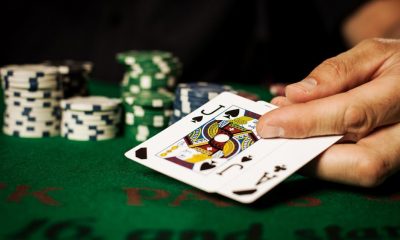

10 Best “Real Money” Online Blackjack Sites (August 2023)


Best Blackjack Strategies That Work in August 2023


7 “Best” Bitcoin Blackjack Casinos (August 2023)
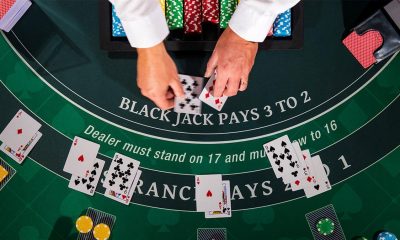

When to Double Down in Blackjack – Everything You Need to Know
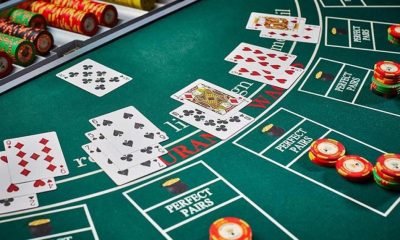

When Should You Surrender in Blackjack? – Everything You Need to Know
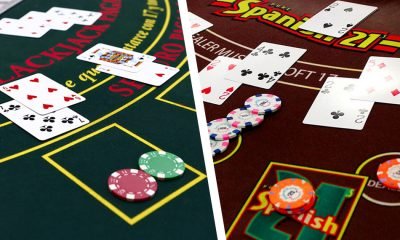

Blackjack vs Spanish 21: What’s the Difference?
